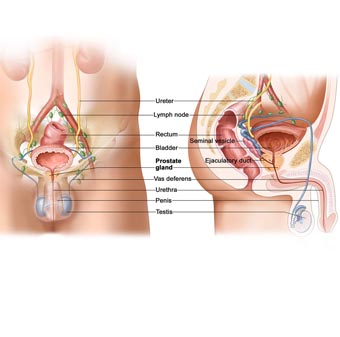

Benign Prostatic Hyperplasia (BPH), commonly known as prostate gland enlargement, is a common issue seen in men as they get older. People with benign prostatic hyperplasia often suffer from urinary tract problems, kidney problems, and a block in the flow of urine. Medications, minimally invasive procedures and surgeries are a few of the ways in which benign prostatic hyperplasia can be treated.
Some of the symptoms of BPH are as follows:
- - Difficulty in urination
- - Nocturia - Frequent urination at night
- - Post micturition incontinence - Dribbling of urine at the end
- - Urinary incontinence - Involuntary urine leakage
- - Painful urination
- - Incomplete bladder emptying
Surgery for prostate:
TURP is usually done to ease symptoms caused by an enlarged prostate. It’s the surgical removal of part of the prostate gland and is by far the most common surgical procedure used for benign prostate disease.
TURP is a procedure to resect the prostate which may be enlarged in a condition called benign prostatic hypertrophy (BPH), commonly found in elderly men.
The prostate is a small, chestnut shaped gland composed of different lobes enclosed in a fibrous capsule. Located just below the bladder and in front of the rectum, the prostate also surrounds the urethra, the canal through which urine is passed out of the body.
How is BPH Diagnosed?
It is usually diagnosed by a combination of some of the following methods:
TURP is usually done to ease symptoms caused by an enlarged prostate. It’s the surgical removal of part of the prostate gland and is by far the most common surgical procedure used for benign prostate disease.
- - Digital rectal examination
- - Measurement of the urine flow using a flow-meter (uroflowmetry)
- - Ultrasound of the urinary tract to measure post-void residual urine, prostate size, bladder wall thickness and to look for any swelling of the kidneys (hydroureteronephrosis)
